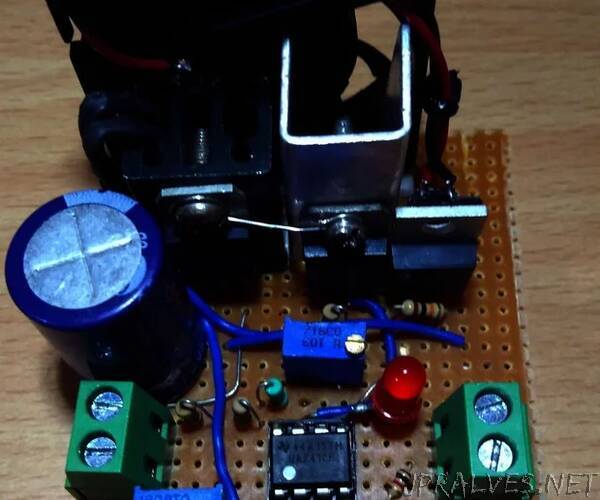
“A linear voltage regulator maintains a constant voltage at output if the input voltage is greater than output while dissipating the difference in the voltage times the current watts of power as heat.
You can even make a crude voltage regulator using a Zener diode, 78xx series regulators and some other complimentary components, but that won’t be able to supply high currents like 2-3A.
The overall efficiency of linear regulators is very less compared to switch mode supplies, buck, boost converters since it dissipates the unused energy as heat and has to be removed constantly other wise the regulator seizes.
This power supply design is totally worth it if you don’t have any power efficiency issues or if you are not powering a portable circuit from a battery.
The whole circuit is made of three blocks,
1. Main variable regulator(1.9 - 20 V)
2. secondary regulator
3. Comparator, fan motor driver(MOSFET)
A LM317 is a great voltage regulator for beginners when used properly. It only requires one voltage divider given to its adjust pin to get a variable voltage at output. Output voltage depends on the voltage at adjust pin, generally kept at 1.25 V.
output and adjust pin voltage are related as, Vout = 1.25(R2/R1+1)
The current on the load remains almost as same as i/p current at any voltage set. Lets assume If the load at O/p draws current of 2A at 10V, the remaining Voltage of 10V with remaining current of 1A is converted in the form of heat of 10W!!!!!!
So its a good idea to attach a heat sink to it………why not a FAN!!!!??????
I had this mini fan laying around a while, but the problem was it can take only 12V for maximum rpm but I/p voltage is 20V , so i had to make a separate regulator(using LM317 itself) for the fan, but if i keep the fan on all the time thats just wastage of power, so added a comparator to turn on the fan only when the temperature of the main regulator heat sink reaches a preset value.
Lets get it started!!!”
